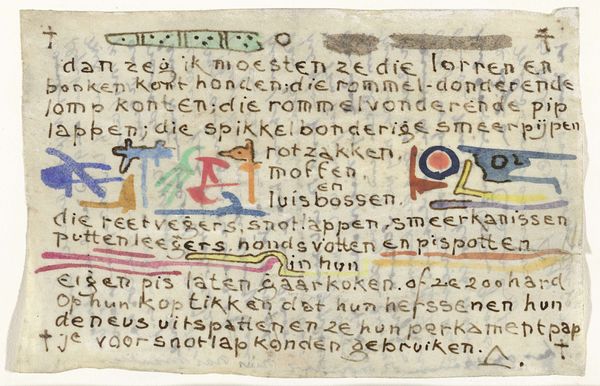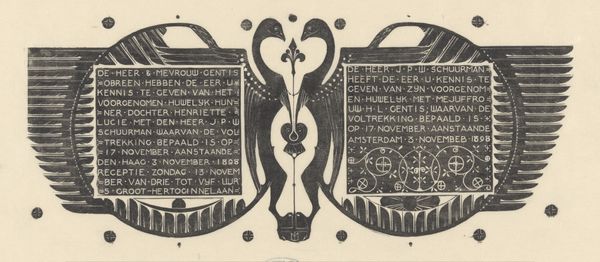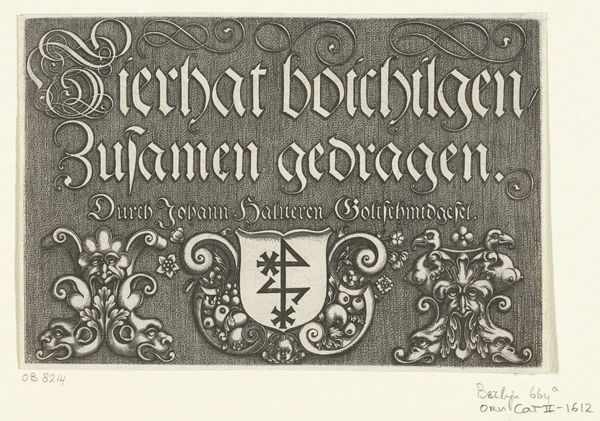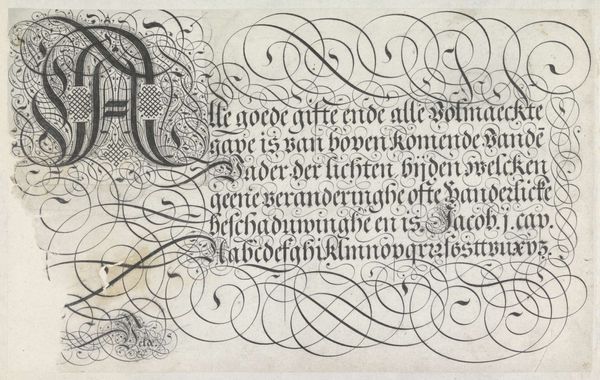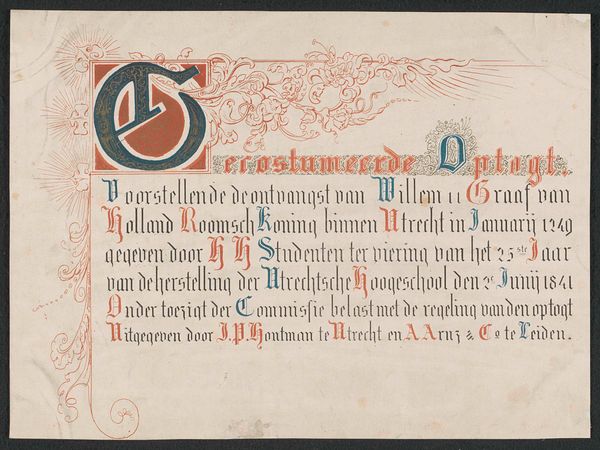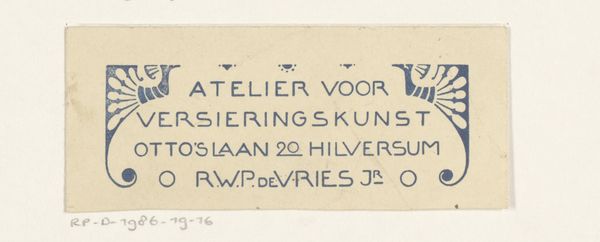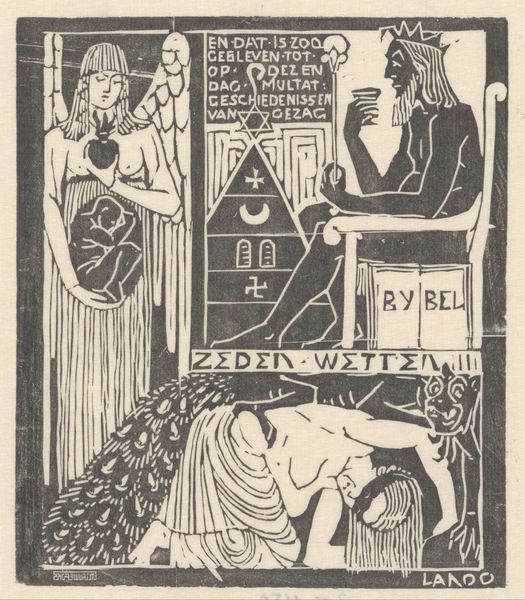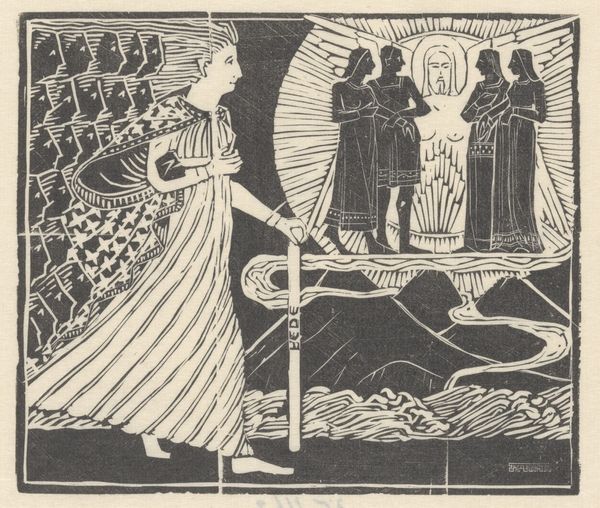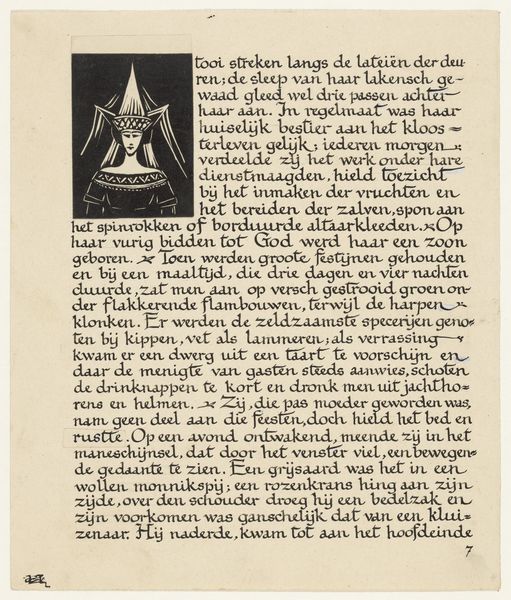
graphic-art, print, woodcut, poster
#
graphic-art
#
art-nouveau
# print
#
woodcut
#
poster
Dimensions: height 267 mm, width 272 mm
Copyright: Rijks Museum: Open Domain
Curator: Before us, we have a poster titled "Aankondiging voordracht 'Apollo en Marsyas'," created sometime between 1894 and 1935 by Mathieu Lauweriks. It's a woodcut print, a graphic-art piece in the Art Nouveau style. Editor: It's quite striking. The heavy black ink on what I assume is paper gives it a forceful presence, almost aggressive with its angular typography and stark contrast. The entire composition, including that large hand, feels almost carved rather than printed. Curator: Lauweriks's process is key here. This is a woodcut, meaning he painstakingly removed material from the block to create the design. Consider the labor involved in such precise cuts, and how that materiality impacts our understanding of the image and the message. Editor: Yes, I notice the imagery beyond the process; there's a hand pointing skyward, labeled "Waarheid" which means 'truth'. And beneath that, a profile of a tormented man. All in sharp juxtaposition with those geometric and abstracted letters at the top. How does that relationship impact its message about the myth of Apollo and Marsyas? Curator: The materials reinforce the message, I think. Woodcut is not a medium for soft subtleties. The contrast feels declarative, reflecting the inherent conflict between Apollo and Marsyas. The message of "Truth", connected by the hand with text promising 'exoteric and esoteric revelations', implies social critique—that society prepares "the naked outburst" through esoteric knowledge. This aligns with debates around craft, the machine, and cultural anxieties common during Art Nouveau. Editor: Fascinating. The hand, the central symbol, directs our attention upwards to the almost architectural arrangement of the letters and further highlighting this layered sense of revealed and obscured knowledge, just like how ancient mysteries would use symbolism and allegory to share ideas that needed protection. It pulls together ideas about mortality, knowledge, and enlightenment. Curator: Exactly. And that points back to Lauweriks's practice. Each carve is a deliberate act, imbued with this social and intellectual intention. The limitations of woodcutting push his expression and strengthen his artistic voice, embedding these anxieties directly into the artwork. It's really where high art and craft collide. Editor: So, beneath this deceptively simple poster lies a world of social, cultural, and historical tension—reflected as much in Lauweriks' process as in his choice of symbolic imagery and the figures in the ancient tale. Curator: Indeed. It serves as a stark reminder that art can reveal deeper truths through thoughtful engagement with materials and the culture surrounding its making.
Comments
No comments
Be the first to comment and join the conversation on the ultimate creative platform.
